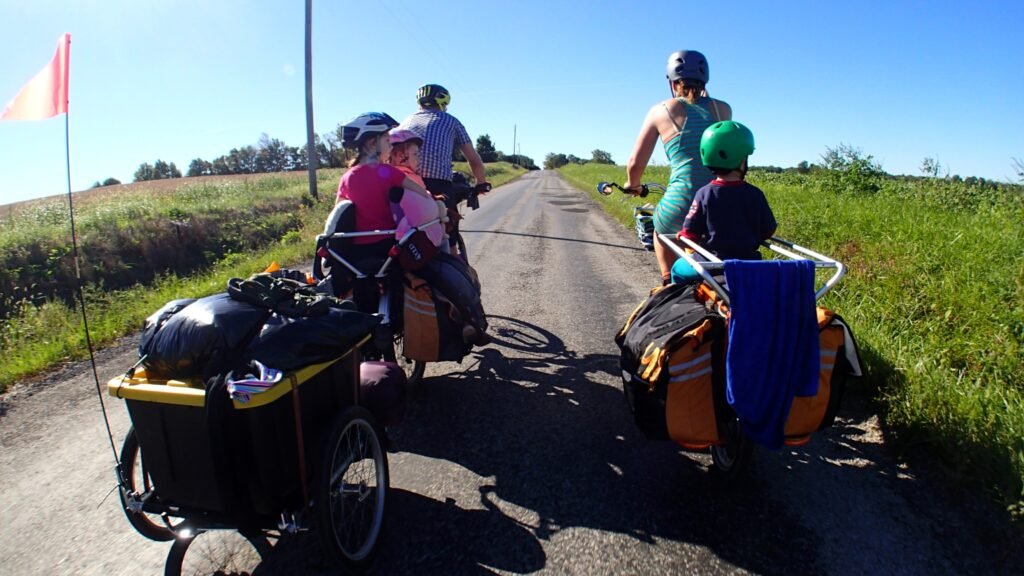
Playing with toy guns can be a fun and imaginative activity for children, but it’s important to prioritize safety. With the increasing popularity of toy guns, it’s crucial for parents and caregivers to take necessary precautions to ensure safe play. In this article, we will provide you with some valuable tips on how to ensure safe toy gun play, allowing your child to enjoy their playtime while staying out of harm’s way.
Choosing Safe Toy Guns
Look for age-appropriate toys
When choosing toy guns for children, it is essential to consider their age and developmental stage. Look for age-appropriate toys that are designed specifically for their age group. Younger children should be given simpler toy guns with larger parts to minimize the risk of choking hazards. As children grow older, they can handle more complex toy guns that are suitable for their fine motor skills and level of understanding.
Check for safety labels
Before purchasing a toy gun, always check for safety labels. Look for toys that have been tested and approved by reputable safety organizations, such as the Consumer Product Safety Commission (CPSC) or ASTM International. These labels ensure that the toy guns have undergone rigorous testing to meet specific safety standards. Make sure the toy guns have no small parts that could break off and pose a choking hazard.
Avoid realistic-looking guns
To prevent any potential misunderstandings or accidents, it is advisable to avoid toy guns that closely resemble real firearms. Realistic-looking guns may confuse law enforcement officers, other people in public spaces, or even children themselves. Opt for toy guns that are clearly distinguishable as toys, with bright colors or other visual indicators that differentiate them from real firearms.
Consider the materials used
When choosing toy guns, pay attention to the materials they are made of. Look for toys made from non-toxic, durable materials that can withstand rough play. Avoid toys made from cheap, brittle plastic that could break easily and potentially cause harm. Additionally, consider the weight of the toy gun. Lightweight toy guns are generally safer and less likely to cause injuries if accidentally dropped or mishandled.
Teaching Safe Toy Gun Usage
Set clear rules and boundaries
Establish clear and understandable rules for playing with toy guns. These rules should include guidelines for where and when the toy guns can be used, as well as any restrictions on the types of play or target practice allowed. Communicate these rules to your child in a calm and friendly manner, emphasizing the importance of safety and responsible play.
Emphasize never pointing the gun at people or animals
One of the most crucial rules when it comes to toy gun usage is to instill in children the understanding that they should never, under any circumstances, point the toy gun at people or animals. Teach them that the purpose of toy guns is for imaginative play and target practice, but never for inflicting harm. Encourage them to aim only at designated targets or inanimate objects.
Teach proper handling and storage
Educate your child about the correct way to handle and store toy guns. Teach them to always hold the toy gun with two hands, just like with real firearms, to maintain better control and prevent accidental dropping. Instruct them to never leave the toy gun unattended, especially if there are younger siblings or pets around who could potentially get a hold of it.
Discuss the differences between real guns and toys
Engage in conversations with your child about the significant differences between real guns and toy guns. Make it clear that real firearms are dangerous weapons designed for adults only and require extensive training and responsibility. Explain that toy guns are designed for playful purposes, and they should never confuse the two or attempt to imitate real-life gun use.

This image is property of images.unsplash.com.
Supervising Toy Gun Play
Always supervise children during play
It is crucial to always closely supervise children when they are playing with toy guns. As a parent or caregiver, maintain a watchful eye to ensure that they are following the established rules and using the toys safely. By actively supervising their play, you can quickly intervene if any unsafe behavior is observed or if they need guidance on responsible play.
Monitor for proper use of toys
While observing children’s play, monitor whether they are using the toy guns as intended and complying with the rules you have set. Ensure that they are pointing the toy gun only at designated targets or objects and not at people or animals. If you notice any deviations from the established guidelines, offer gentle reminders and guidance to correct their behavior.
Intervene if unsafe behavior is observed
If you witness any unsafe behavior or misuse of toy guns, intervene immediately. Communicate calmly and firmly that the behavior is not acceptable and provide clear explanations as to why it is dangerous. Offer alternative ways to use the toy guns that are safe and still enjoyable. Reinforce the importance of respecting others’ safety and well-being.
Encourage safe and responsible play
Throughout the playtime, consistently encourage and reinforce safe and responsible play. Praise children when they handle the toy guns appropriately and follow the rules you have established. Positive reinforcement helps them understand the importance of playing safely and motivates them to continue exhibiting responsible behavior.
Creating Safe Toy Gun Play Environments
Provide a designated play area
Designate a specific area in your home or backyard where children can safely play with their toy guns. This designated play area helps minimize the risk of accidents or unintentional harm to others. By confining toy gun play to a designated space, you can better control the environment and ensure a safer play experience.
Remove any hazards or obstructions
Before allowing children to engage in toy gun play, carefully inspect the designated play area for any potential hazards or obstructions. Remove any sharp objects, tripping hazards, or fragile items that could break if accidentally hit by a toy gun. Ensure that the space is clear of obstacles, providing a safe environment for uninterrupted play.
Ensure adequate space for safe play
When setting up the designated play area, ensure that there is sufficient space for safe play. Toy guns often require movement and maneuvering, so providing ample room prevents accidental collisions or injuries. If playing outdoors, ensure that the play area is free from any potential dangers, such as traffic or bodies of water.
Secure any loose parts or accessories
Check the toy guns for any loose parts or accessories that could become detached during play. Loose parts can pose a choking hazard or cause other injuries if swallowed or stepped on. Ensure that the toys are in good condition and securely assembled before each play session. If any parts are damaged or compromised, either repair them or consider replacing the toy.

This image is property of images.unsplash.com.
Promoting Communication and Consent
Encourage open dialogue about gun play
Create an open and non-judgmental space for children to discuss their thoughts and questions about toy gun play. Encourage them to share their feelings, thoughts, and any concerns they may have. By fostering open dialogue, you can better understand their perspectives and provide appropriate guidance on safe toy gun play.
Teach children about consent and respect
Use toy gun play as an opportunity to teach children about the importance of consent and respect for others. Discuss how it is essential to respect someone’s decision if they choose not to participate in a game involving toy guns. Teach children to ask for consent before including others in their play and to be mindful of others’ boundaries and comfort levels.
Promote non-violent problem-solving
Encourage children to find non-violent ways to resolve conflicts and solve problems during toy gun play. Teach them that using words to express their feelings, negotiating, and compromising are much more constructive methods for conflict resolution. Emphasize the value of peaceful and non-aggressive communication, helping them develop essential social skills.
Discuss the impact of violent play on others
Engage in conversations about the potential impact of violent play on others. Help children understand how their actions and choices can affect others’ feelings and well-being. Encourage empathy and teach them to consider the perspectives of others, fostering a sense of responsibility and respect towards their peers.
Enforcing Toy Gun Safety
Establish consequences for unsafe behavior
Clearly establish consequences for unsafe behavior during toy gun play. Inform children in advance about the potential consequences of disregarding safety rules or engaging in dangerous behavior. Consistent consequences, such as temporarily taking away toy gun privileges or time-out periods, can serve as deterrents and reinforce the importance of playing safely.
Consistently enforce safety rules
Consistency is key when it comes to enforcing safety rules. Ensure that the established safety rules are consistently followed and enforced. By consistently reiterating and enforcing the rules, children will understand that safety is a top priority and develop a habit of playing responsibly.
Model safe behavior and responsible gun play
Children learn by observing and imitating adults. Set an example by modeling safe behavior and responsible gun play. Show them how to handle and use the toy guns appropriately, emphasizing the importance of pointing them only at designated targets or objects. Demonstrate proper storage and handling techniques, reinforcing the idea of responsible play.
Encourage peer accountability
Encourage children to hold each other accountable for safe and responsible toy gun play. Teach them to remind their friends or siblings of the established rules and intervene if someone is not following them. Peer accountability promotes a sense of collective responsibility and enhances the overall safety of toy gun play.

This image is property of images.unsplash.com.
Addressing Misconceptions and Stereotypes
Explain the difference between real guns and toys
Address any misconceptions children may have about the difference between real guns and toys. Provide simple and age-appropriate explanations, emphasizing the importance of understanding that real guns are dangerous weapons that require extensive training and responsibility. Reinforce that toy guns are for entertainment purposes only and should never be taken lightly.
Correct misconceptions about toy gun usage
Occasionally, children may develop misconceptions about how toy guns should be used. Correct any misunderstandings they may have, such as erroneously believing that pointing toy guns at people is acceptable. Explain the importance of responsible play and the potential consequences of unsafe behavior, helping them develop a clear understanding of appropriate toy gun usage.
Challenge gender stereotypes associated with toy guns
Toy guns are often associated with boys and masculine play. However, it is essential to challenge these gender stereotypes and encourage girls to engage in toy gun play if they are interested. Provide a diverse range of toys and play scenarios that appeal to both boys and girls, fostering inclusivity and promoting equal opportunities for imaginative play.
Encourage diverse forms of imaginative play
While toy gun play can be an exciting and engaging form of imaginative play, it is crucial to encourage and provide opportunities for diverse forms of play. Introduce children to a wide range of toys and play scenarios that incorporate problem-solving, creativity, and cooperation. Encouraging diverse forms of imaginative play helps broaden their perspective and enhances their overall play experience.
Combating Desensitization to Violence
Limit exposure to violent media
Monitor and limit children’s exposure to violent media, such as video games, movies, and television shows. Excessive exposure to violent content can desensitize children to the impact and consequences of violence. Encourage age-appropriate, non-violent media options that promote positive values and teach valuable life lessons.
Discuss the impact of violence on real-life situations
Engage in honest and age-appropriate conversations with children about the impact of violence on real-life situations. Help them understand the potential consequences of resorting to violence as a solution to problems. Nurture their sense of empathy by discussing the emotions and experiences of individuals who have been affected by violence, fostering a deeper understanding and respect for the value of peaceful conflict resolution.
Encourage empathy and understanding
Promote empathy and understanding in children by encouraging them to consider the feelings and perspectives of others. Engage in activities that cultivate empathy, such as role-playing, storytelling, or volunteering for community service. By nurturing empathy, children can develop a deeper awareness of the impact of their actions and make conscious choices that promote peace and understanding.
Provide alternative play options
Offer children alternative play options that provide opportunities for creativity, cooperation, and problem-solving without involving violence. Encourage activities such as building blocks, arts and crafts, puzzles, or outdoor explorations that stimulate their imagination and foster a sense of curiosity. By providing diverse play options, children can develop a well-rounded set of skills and interests.
Involving Parents and Caregivers
Educate parents about toy gun safety
As a parent or caregiver, take the initiative to educate other parents about toy gun safety. Share your knowledge and experiences, providing guidance on choosing safe toys and establishing rules for safe play. Encourage open discussions among parents to exchange ideas and best practices for promoting safe and responsible toy gun play.
Discuss appropriate play with other adults
When your child visits other homes or interacts with other adults, proactively discuss your expectations regarding toy gun play. Ensure that the adults understand and respect your safety rules and boundaries. It is essential to have open and constructive conversations to ensure consistency and maintain a safe play environment, even outside your own home.
Provide resources and recommendations
Share reputable resources and recommendations with parents and caregivers to help them further educate themselves on toy gun safety. Point them towards articles, websites, or parenting books that focus on promoting safe and responsible play. By providing resources, you can empower parents to make informed decisions and actively engage in teaching their children about toy gun safety.
Encourage open communication and questions
Create a supportive environment that encourages open communication and welcomes questions from parents and caregivers about toy gun safety. Be available to address any concerns, offer advice, or discuss specific scenarios. By fostering open communication, you can strengthen the collective effort to ensure safe toy gun play for all children.
Toy Gun Safety for Different Age Groups
Safety considerations for toddlers
When it comes to toddlers, it is crucial to prioritize their safety. Avoid giving them toy guns with small or detachable parts that may pose a choking hazard. Choose toys made from non-toxic, sturdy materials that can withstand rough play. Also, closely supervise their play to ensure they do not misuse the toy guns or engage in any potentially dangerous behavior.
Guidelines for preschool-age children
Preschool-age children can begin to understand and follow basic safety rules for toy gun play. Continue to provide toys made from non-toxic materials, checking for any potential hazards or loose parts before each play session. Teach them about proper handling, storage, and never pointing the toy gun at people or animals. Remember to closely supervise their play and intervene if necessary.
Teaching responsible play to school-age children
As children reach school age, they can begin to comprehend more complex safety concepts. Emphasize the importance of following rules and boundaries during toy gun play. Encourage responsible play by modeling appropriate behavior and discussing the impact of violent play on others. Provide a designated play area and monitor their play to ensure continued safety.
Teenagers and toy gun safety
Teenagers may have a broader understanding of the distinction between real guns and toys. However, it is still essential to reinforce responsible play and safety rules. Encourage teenagers to help set an example for younger siblings or friends and involve them in discussions about the impact of violence and the promotion of non-violent problem-solving. Keep the lines of communication open and continue to provide guidance and support.